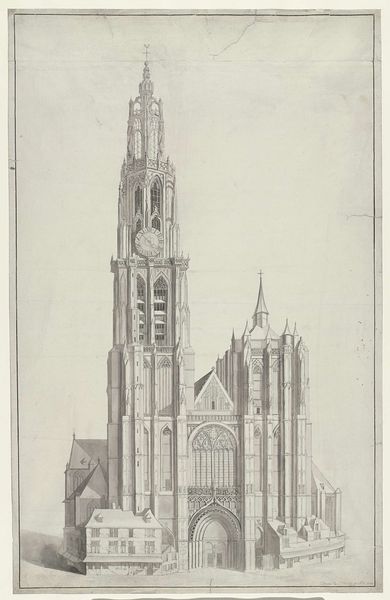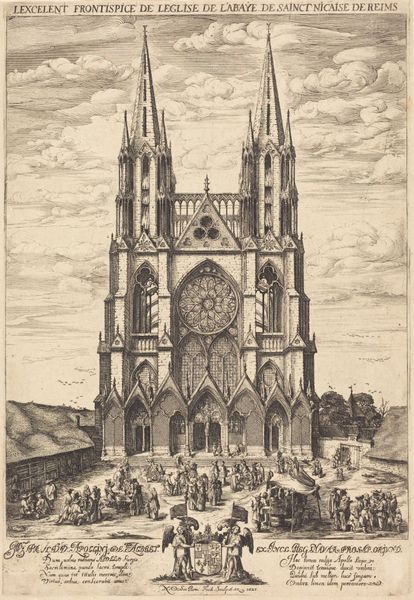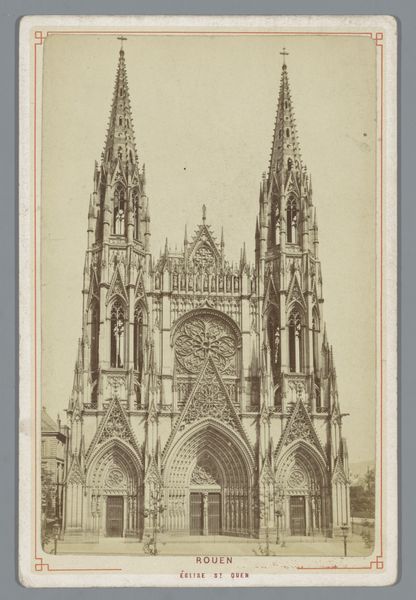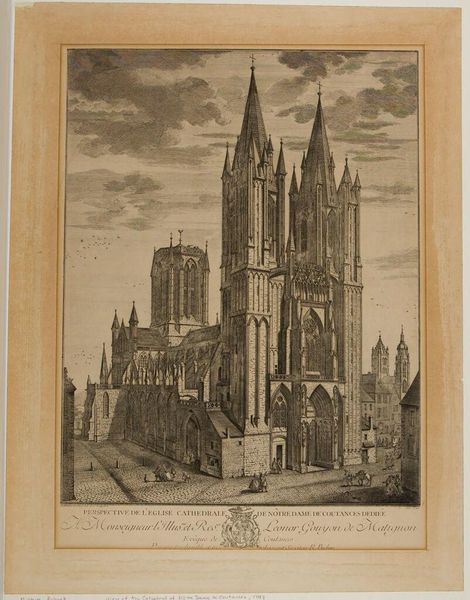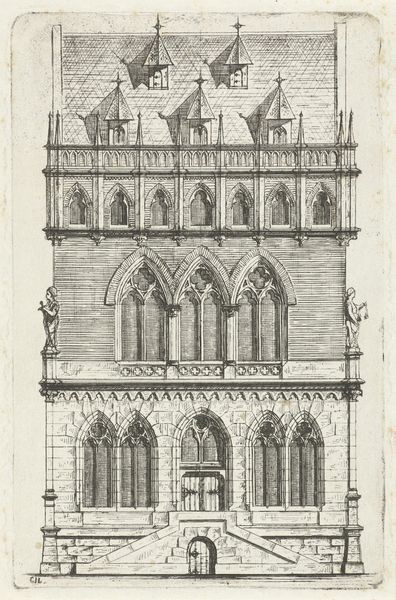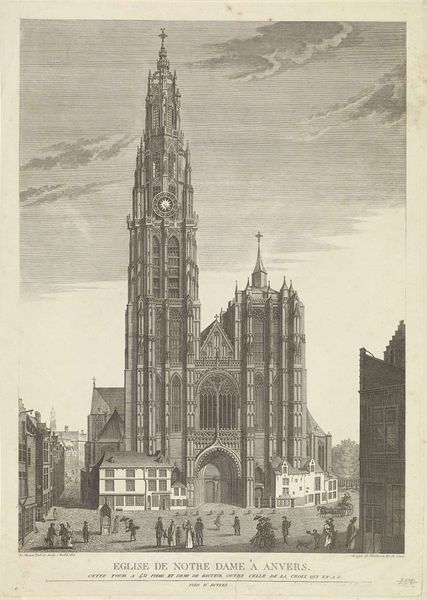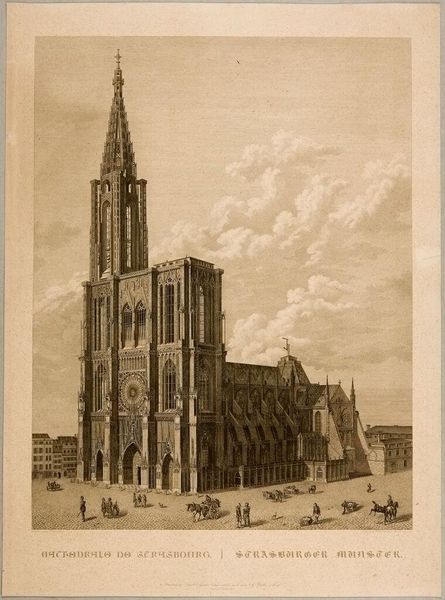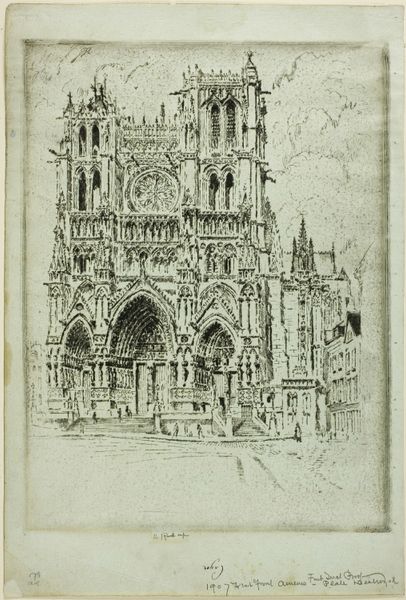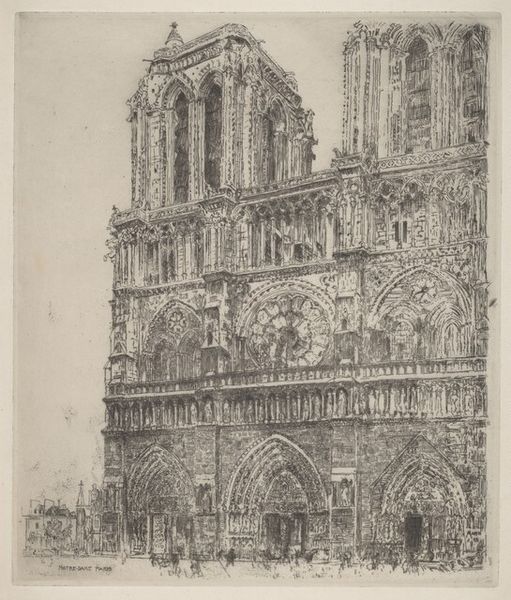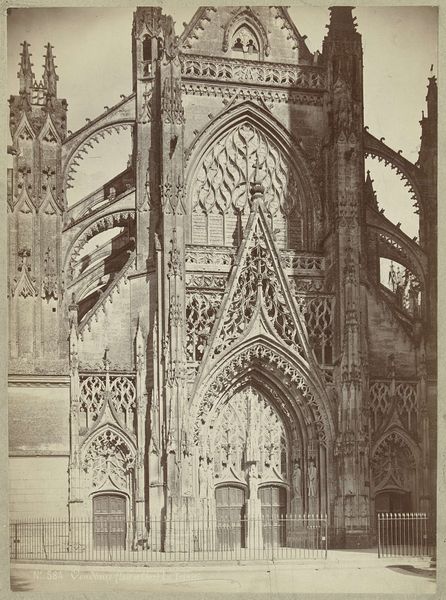
drawing, print, intaglio, engraving, architecture
#
architectural sketch
#
drawing
#
baroque
# print
#
intaglio
#
geometric
#
line
#
cityscape
#
engraving
#
architecture
Dimensions: height 225 mm, width 139 mm
Copyright: Rijks Museum: Open Domain
Curator: This engraving from 1747 by Frans de Bakker depicts the west portal of the Church of Saint-Nicaise in Reims. What are your initial thoughts? Editor: So precise! It reminds me of technical drawings. Like a blueprint, but with this surprisingly soft touch… almost ghostly. I keep wanting to reach out and trace those lines with my finger. What was its purpose do you think? Curator: It was likely intended as an architectural record, or even perhaps as part of a promotional series. Consider the labor involved, the skilled hand etching each delicate line on the copperplate; this print itself becomes a commodity, showcasing both the grandeur of the church and the expertise of the printmaker. Editor: A commodity… That's interesting, especially thinking about all the spiritual and philosophical aspiration encoded in its ornamentation and gothic verticality! And there's a little window motif tucked up on the right that gives you a close-up detail of interior structure. As if the artist felt the need to prove his expertise? Curator: Well, yes. Note the inclusion of explanatory text in both French and Dutch, identifying various architectural elements. These prints circulated within a specific market— architects, patrons, and those interested in documenting and disseminating architectural knowledge. Editor: It does feel… very… rational for something representing a sacred place! And all this meticulous detail… does that relate back to social context? I'm curious what the market for something like this may have been like at that point. Curator: Consider the burgeoning of scientific thought during this period. Printmaking allowed for the accurate dissemination of knowledge. People wanted to capture the built world and the natural world with scientific accuracy and circulate them amongst peers! Editor: Thinking about this less as pure documentation, and more of an artisan making their claim through method, labor and distribution, makes it so much more appealing! A lot to ponder there! Curator: Indeed, it reveals how seemingly objective representations are, in reality, deeply embedded in material practices, skill, and market considerations.
Comments
No comments
Be the first to comment and join the conversation on the ultimate creative platform.
